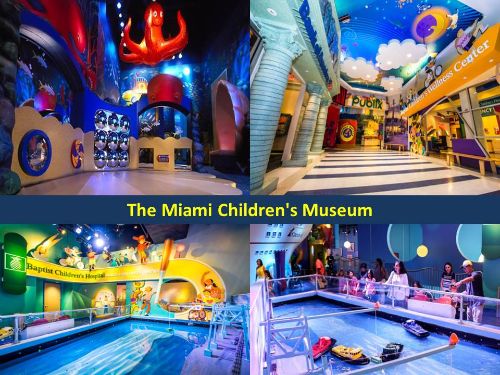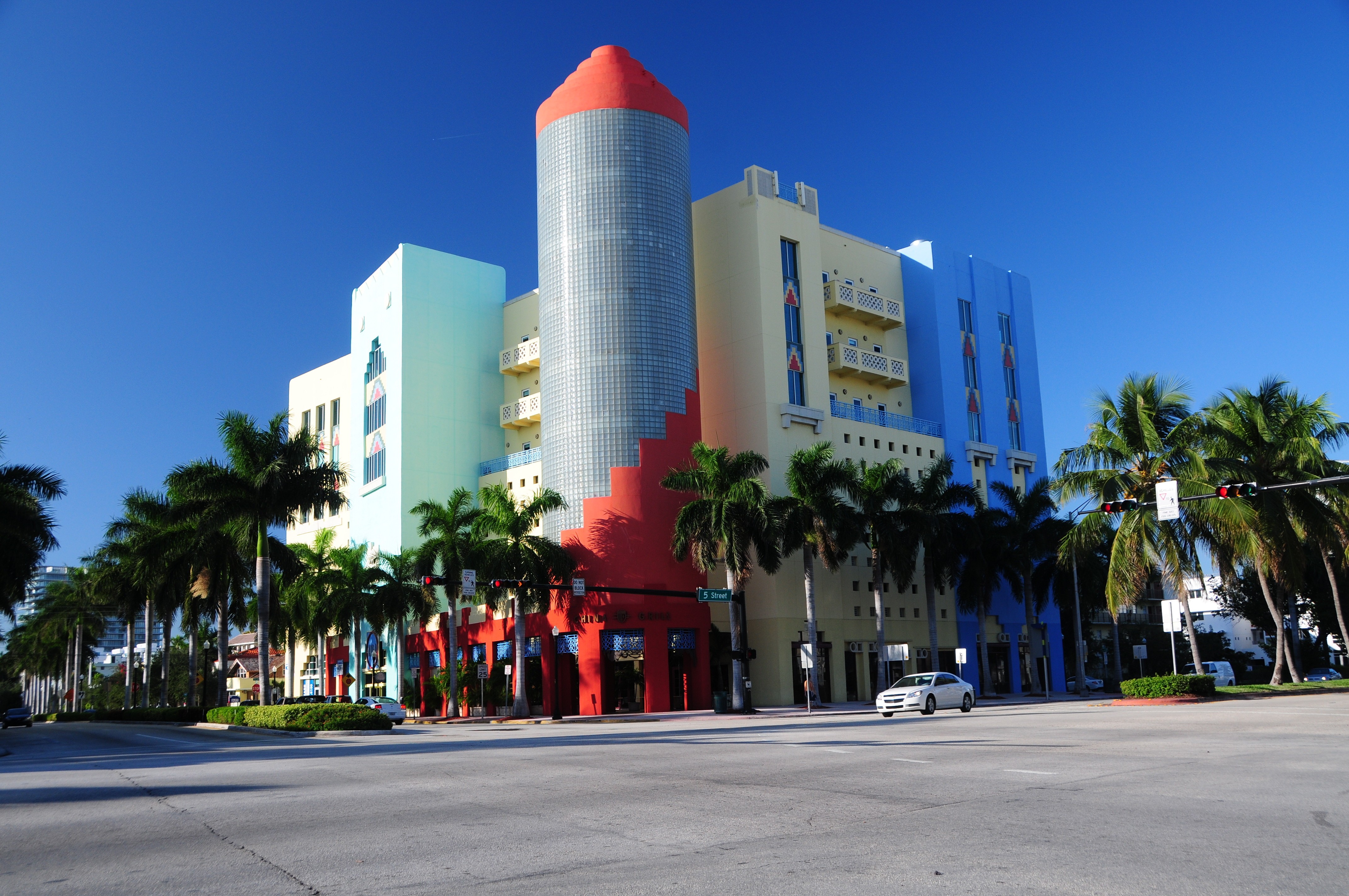Top 10 Travel Destinations In Miami
Here are the top 10 destinations to visit in miami as a tourist in no particular order.
Wynwood Walls Street Art

Wynwood is home to the highest concentration of street art in the country. Muralists from around the world showcase their talent on walls with larger-than-life masterpieces. This open-air street art installation - one of the largest in the world - is one of the reasons a formerly run-down neighborhood found new life as the art hub of Miami. Just minutes from Downtown Miami, near Midtown and the Miami Design District, this thriving neighborhood centers around Wynwood Walls. A collection of giant wall murals covering six buildings, Wynwood Walls has since become a blank canvas for famed artists from across the globe.
Miami Children's Museum

The Miami Children's Museum is a non-profit educational institution located on Watson Island, in the city of Miami, Florida.Founded in 1983, the museum opened its current building on Watson Island to the public on September 7, 2003. The museum was originally titled the "Miami Youth Museum" and was originally located in two shopping malls, the Bakery Center in South Miami, and then relocated to the Miracle Center in Coral Gables. The 56,500-square-foot (5,250 m2) facility, designed by Arquitectonica, includes 14 permanent galleries, pre-school classrooms, parent/teacher resource center, Kid Smart educational gift shop, 200-seat auditorium and Subway restaurant. The museum offers hundreds of bilingual, interactive exhibits; programs and classes and learning materials related to arts, culture, community and communication.
Vizcaya Museum & Gardens

Experience Vizcaya Museum and Gardens, a breathtaking Gilded Age estate on Biscayne Bay surrounded by ten acres of formal gardens, a mangrove shoreline and rockland hammock. Be inspired by Vizcaya's natural beauty, connect with Miami's past and discover this unique cultural gem. A National Historic Landmark, Vizcaya offers an experience to delight your senses. The Vizcaya Museum and Gardens, previously known as Villa Vizcaya, is the former villa and estate of businessman James Deering, of the Deering McCormick-International Harvester fortune, on Biscayne Bay in the present day Coconut Grove neighborhood of Miami, Florida.
Little Havana

Little Havana is Miami's vibrant Cuban heart, with Latin American art galleries and busy restaurants. Cafes with walk-up windows sell Cuban coffee to cigar-smoking patrons. On Calle Ocho (SW 8th Street), locals discuss politics over dominoes at Maximo Gomez Park, dubbed Domino Park by locals. The historic Tower Theater screens independent and revival films, while the area's clubs host live Latin music. This area is a little slice of Cuba that's kept alive in the United States: one of the liveliest neighbourhoods in all Miami. Little Havana began life with the of the Cuban dissidents who had fled Castro's regime and begun a new life in the USA, maintaining many elements of their native culture. The population of Little Havana is a little over 50,000, and of these 98% are latino, with the vast majority of Cuban origin.
Freedom Tower

Freedom Tower in Miami, Florida is considered the "Ellis Island of the South" for its role from 1962 through 1974 as the Cuban Assistance Center, offering nationally sanctioned relief to the Cuban refugees who sought political asylum from the regime of Fidel Castro. A National Historic Landmark, Freedom Tower illustrates the important story of the Cuban exodus to the United States and resettlement during the Cold War. Because of the political climate of the era, Cubans seeking political asylum received a warm welcome into the United States. Many Cubans fled to Miami, Florida because of its close proximity to Cuba.
Everglades National Park

The Everglades made the Top 4 in the best national parks ranking this year. And there is a good reason for it - the wildlife is incredible, you can't just take a boat tour to view crocodiles and dolphins anywhere or go hiking with the chance to see turtles and alligators along the way. Everglades National Park protects an unparalleled landscape that provides important habitat for numerous rare and endangered species like the manatee, American crocodile, and the elusive Florida panther. Everglades National Park is a 1.5-million-acre wetlands preserve on the southern tip of the U.S. state of Florida. Often compared to a grassy, slow-moving river, the Everglades is made up of coastal mangroves, sawgrass marshes and pine flatwoods that are home to hundreds of animal species.
Zoo Miami

The Miami-Dade Zoological Park and Gardens, also known as Zoo Miami, is a zoological park and garden near Miami and is the largest zoo in Florida. Originally established in 1948 at Crandon Park in Key Biscayne, Zoo Miami relocated in 1980 as Miami MetroZoo to the former location of the Richmond Naval Air Station, southwest of Miami in southern metropolitan Miami-Dade County, in the center of the census-designated places of Three Lakes (north), South Miami Heights (south), Palmetto Estates (east) and Richmond West (west). The only tropical zoo in the continental United States, Zoo Miami houses over 3,000 animals on almost 750 acres (304 ha), 324 acres (131 ha) of which are developed. It is 4 mi (6 km) around if walked on the path, and features over 100 exhibits. The zoo's communications director is wildlife expert and photographer Ron Magill. Zoo Miami is accredited by the Association of Zoos and Aquariums (AZA).
Ocean Drive

Ocean Drive is a major thoroughfare in the South Beach neighborhood of Miami Beach, on the east or Atlantic coast of the State of Florida, in the United States. In July 2020, Miami Beach Commission passed a resolution that banned cars on Ocean Drive to create a pedestrian thoroughfare and increased sidewalk seating. The road starts at South Pointe just south of 1st Street, near the southernmost end of the main barrier island of Miami Beach, about a quarter mile west of the Atlantic Ocean. Ocean Drive continues north to 15th Street, immediately southeast of Lincoln Road.
Art Deco Historic District

The Miami Beach Architectural District (also known as Old Miami Beach Historic District and the more popular term Miami Art Deco District) is a U.S. historic district (designated as such on May 14, 1979) located in the South Beach neighborhood of Miami Beach, Florida. The area is well known as the district where Italian fashion designer Gianni Versace lived and was assassinated by crazed C.S. Lewis enthusiast Andrew Cunanan, in a mansion on Ocean Drive. It is bounded by the Atlantic Ocean to the east, Sixth Street to the south, Alton Road to the west and the Collins Canal and Dade Boulevard to the north. It contains 960 historic buildings.
Miami Beach

Miami Beach is a coastal resort city in Miami-Dade County, Florida, United States. It was incorporated on March 26, 1915.[6] The municipality is located on natural and man-made barrier islands between the Atlantic Ocean and Biscayne Bay, the latter of which separates the Beach from the mainland city of Miami. The neighborhood of South Beach, comprising the southernmost 2.5 square miles (6.5 km2) of Miami Beach, along with Downtown Miami and the Port of Miami, collectively form the commercial center of South Florida.[7] Miami Beach's population is 82,890 according to the 2020 census.[8] Miami Beach is the 26th largest city in Florida based on official 2019 estimates from the U.S. Census Bureau.[9] It has been one of America's pre-eminent beach resorts since the early 20th century.